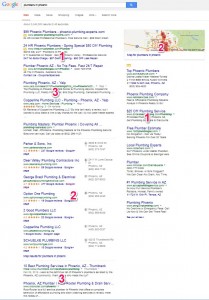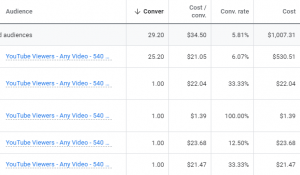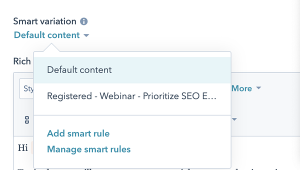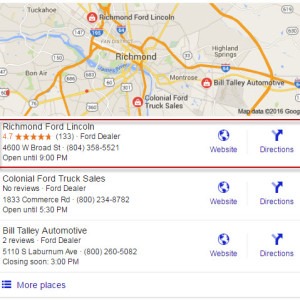No matter the size of your team, clients or projects, account management is one of the most important investments an agency can make. Sure, it’s up to accounting to keep your finances in check; it’s up to creative to keep the ideas flowing; and it’s up to sales and business development to drive new business. However, it’s the responsibility of account managers to ensure clients are kept happy and their goals are being met. In other words, account managers guarantee that business runs smoothly and your agency stays afloat.
To provide the best creative services, you must lay down a solid foundation. And a huge portion of this depends on the ability of account managers to build intelligent, accountable, creative teams. To learn how to build the best creative teams—those who not only produce stellar work, but also support client goals—refer to our tips.
Let the Strengths of Individuals Shine
As the old agency stereotype goes, creatives and account managers are like old, married couples. While relationships can be rocky at times, they are ultimately defined by cohesion and dependence. That’s why it’s important to spend time building rapport with each member of your creative team and working hard to find a balance that yields mutual success.
This depends on your ability to be perceptive of their strengths and shortcomings. Understanding team members on an individual level enables account managers to cater to their specific needs. Setting realistic expectations not only encourages accountability, but it also helps you understand your resource allocation, which ultimately helps guide a project to success.
Implement and Encourage Trust
Respect is the foundation of any good relationship. And the root of respect is trust. Just as clients seek agencies they can trust, your creative team benefits from account managers who work hard to foster an environment of open and honest interpersonal communication. Creatives seek people who not only understand the value of great ideas, but who also appreciate great work and considers it as their own.
As your team’s fearless leader, you must demonstrate you have your team’s back. Furthermore, it’s critical to build upon this foundation and work together to create new opportunities. When creatives know they have your support, they will move forward with confidence.
Lead with Enthusiasm
As any agency veteran can attest to, the life of a creative is full of ups and downs. Projects are rushed, ideas are stretched thin, and budgets are constantly in jeopardy. Plus, it can be downright difficult to produce consistently creative concepts, day in and day out. That’s why account managers need to lead with enthusiasm.
Work hard to create an environment in which problem-solving is natural. Remove roadblocks and set high, yet realistic, expectations. Believe a project can be successful, and encourage the perspective that every project is a chance for your creatives to succeed. Not only is it up to account managers to expect greatness, but it’s up to you to provide exactly what is needed.
Creating an environment founded on passion and enthusiasm leads to an agency driven by similar concepts. Collaborating with and hiring passionate, enthusiastic creatives who aren’t afraid to take risks is the core of successful agencies.
Understanding and Insight
At the end of the day, account managers are managers of expectations. They are the keepers of the project’s budget, scope, and schedule. And they must know exactly what is happening: when, where, why, and how much it will cost.
To truly support client goals, however, account managers must strike a balance between challenging assumptions and meeting expectations. Seventy-six percent of agency executives say their clients are afraid to take risks, and they say they are twice as likely as their clients to feel the best creative can move their businesses (48 percent versus 26 percent).
Knowing what’s right for a client is important, but it’s equally important to always ask “why?” While the end goal of any project is meant to satisfy the needs of your client, sometimes some calculated pushback generates even better results. It’s up to you to reassure your creative team that taking risks can benefit a project. And it’s also up to you to present the strategic advantage to your clients.
The best account managers are smart and savvy, know when to capitalize on an opportunity—even if that means going against the grain—and approach projects from a standpoint that supports both their client’s goals and their creative team’s needs.
Streamlining Communication
It’s never been easier to access information and communicate. Thanks to mobile tools, automated software, and messaging services, it’s entirely possible for employees to stay in touch across the world. However, that doesn’t mean your creative team is communicating effectively.
Between juggling schedules, meetings, and changing client expectations, it can be tough for creatives to remain in the loop at all times. The best account managers work extra diligently to build creative teams who communicate efficiently.
While email and phone will still be a vital part of any agency’s communication strategy, it’s recommended to implement a centralized, internal messaging tool. The ability to communicate in real-time boosts productivity and provides a forum for your team to feel comfortable with each other. And with thousands of options out there, you can easily streamline your agency’s communication efforts.
Utilize Automated Software
Modern technology ensures each detail of your strategic plan is crystal clear to your creative team. These days, agency-specific management tools are designed to increase the productivity and accountability of your entire creative team. Software enables your team to access tasks, schedules, and to-do items—anytime, anywhere. Furthermore, they enable file and document sharing so team members are kept up-to-date on project versions.
From a client perspective, robust agency management software enables account managers to create, edit, view, and print project briefs and reports while still providing the ability to create custom templates. Not only does this customization streamline internal processes, but it also sets your creative team up for success and ensures that clients stay happy.
The best software even incorporates advanced features, such as finance and accounting, resource and traffic management, and sales integrations, to keep your entire agency accounted for. These all-in-one solutions facilitate the ability of your creative team to meet clients’ expectations and goals.
Business & Finance Articles on Business 2 Community
(87)
Report Post








